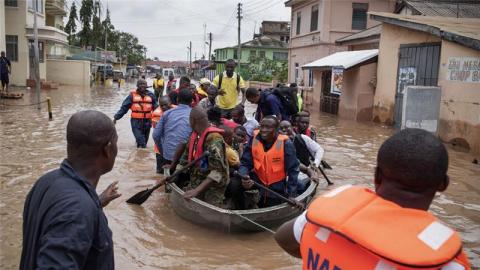Kofi Ahenkan, 7, a student at Community International School, near Santasi roundabout, could not go home after school had closed last Friday.
Akua Manu, 17, alias Mumee, went to the school to pick up Ahenkan.
On their way home, they met their untimely death when floods swept them and carried them to Ahenemma Kokoben, near Santasi.
The bodies were retrieved on Sunday afternoon after a heavy search by residents of Apire.
Meanwhile, the Ghana Meteorological Agency (GMA) has predicted heavy downpours with lightning flashes as part of the upcoming long raining season.
Consequently, the agency advised the general public to avoid taking shelter under transformers, and desist from holding metallic objects.
According to the director of research at the agency, Charles York, the rains are expected to start early this year, from April and until July ending.
He said since the rains would start early, efforts must be made to put in place measures to control flood situations.
In February this year, some parts of the capital were flooded following a heavy downpour on a Tuesday morning.
The rains started a few minutes to 6am and lasted for about an hour and a half.
Several parts of Accra, including Kaneshie, Abossey Okai, Circle, Nima Highway, East Legon and Tantra Hill were swamped.
The rain and its resulting floods caused massive traffic in the capital city.
Over the weekend, over 3,000 residents of six districts of the Northern Region were rendered homeless after severe rainstorm battered communities in the region.
In order to mitigate the risk to people, animals, crops and material goods, the agency recommended that both people and animals must avoid flood-prone areas.
“Maintain a strong collaboration between hydrological and meteorological services for the integration of integrated monitoring and alerting system for early flood risk,” he said.
He added that people should “strengthen exchanges between the agencies for monitoring flood, the reduction of disaster risk and those responsible for humanitarian aid.”
Floods: 2 drown in Kumasi as Meteo predicts heavy downpours
- Posted on
- Comment
From Adwoa Okyere DARKO, Accra











 (Selorm) |
(Selorm) |  (Nana Kwesi)
(Nana Kwesi)